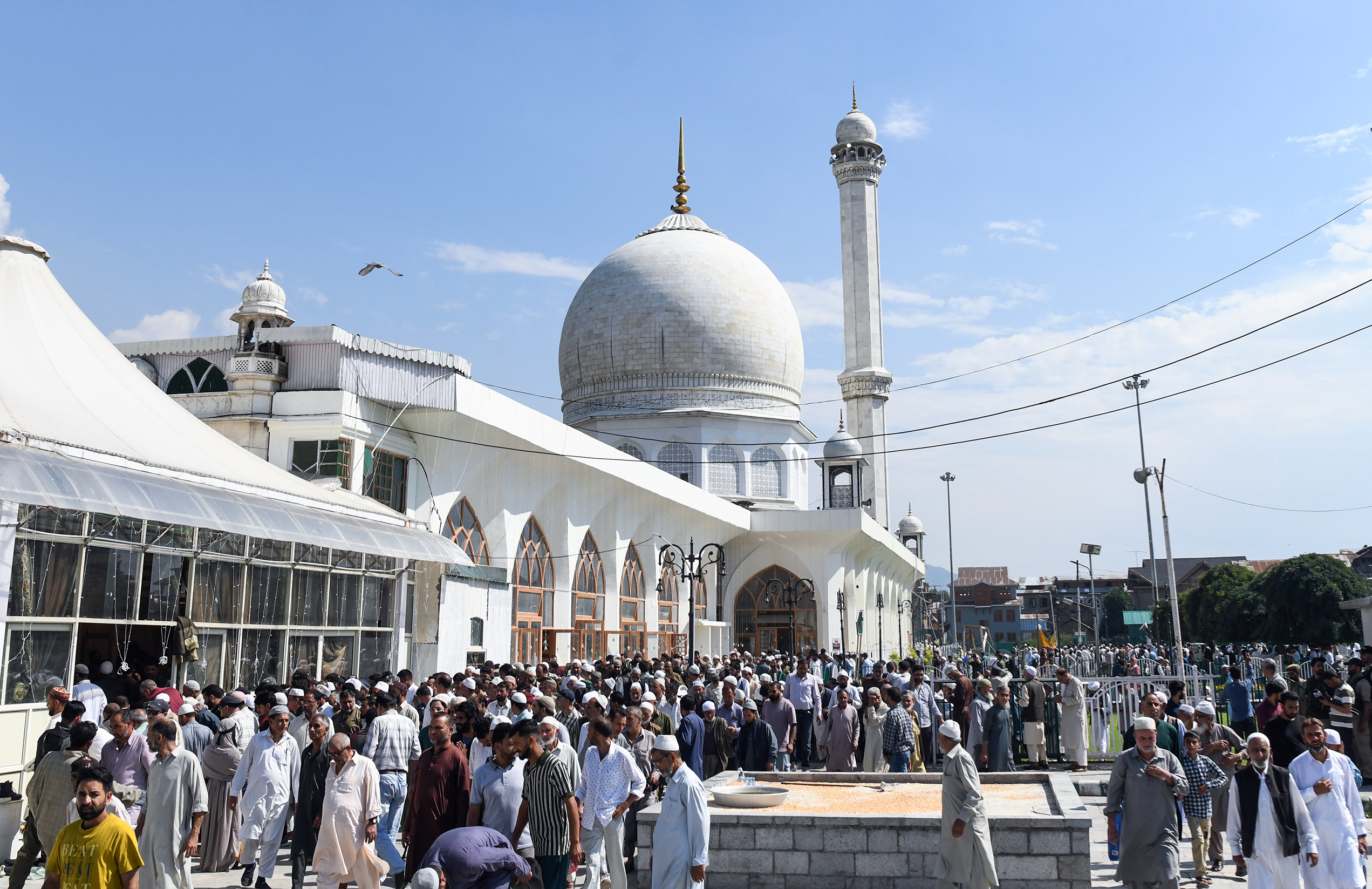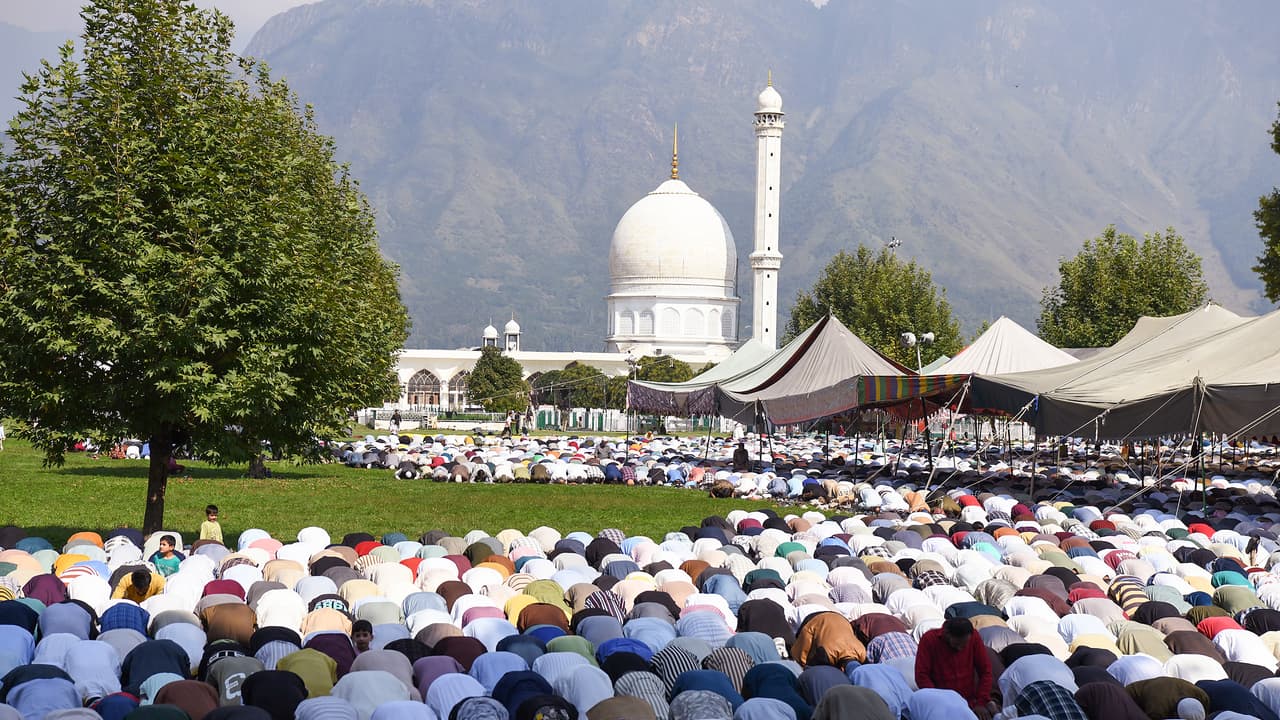Hazratbal standoff in Srinagar ended peacefully with layered cordons, negotiations, and clear civilian-military roles, protecting the Prophet’s relic and avoiding violence inside the shrine.
Just before dawn on a cold Srinagar night, a small convoy rolled to a halt near Dal Lake. Engines clicked to silence. Soldiers spoke in low voices.
A muezzin’s call drifted from across the water. Inside the white-marble Hazratbal complex, lights glowed faintly. Outside, a cordon held its line. The order was simple and unusual for a siege — hold the perimeter, keep tempers low, and do not step inside the shrine.
The standoff had begun weeks earlier, when armed men moved into Hazratbal, which houses the Prophet’s relic. Public feeling was intense. Any misstep could turn a tense city into a firestorm.
Commanders set the tone early. This would be a negotiation-first operation. The Army and police would encircle the site, cut movement in and out and keep patrols visible but measured.
Civilian officials would speak for the state. Religious leaders would carry messages.
The ring-fence came in layers. Traffic was stopped at key junctions, alleys were sealed with concertina wire, rooftops were watched but left quiet. Curfews were imposed to prevent large, angry crowds from forming near the shrine. The idea was to shrink risk without raising the temperature. No unit was to enter the sanctum. No aggressive push would be made unless lives were in immediate danger. The goal was to protect the relic and avoid a clash inside a holy space.

Negotiation Over Force: Setting the Tone
Negotiations moved slowly but steadily. Clerics and local elders went back and forth as trusted go-betweens. They conveyed two clear messages–the shrine would not be stormed, and there was a peaceful way out if the men inside agreed to leave their weapons behind. This channel mattered. It allowed face-saving steps on both sides and kept the subject fixed on safety, not politics.
From the very beginning, there was no order to assault. Senior officers understood what the site meant to ordinary Kashmiris. Entering the shrine by force risked long-term damage that no quick tactical gain could justify. That discipline also protected the soldiers on the cordon. A raid in close quarters with a packed crowd outside could have ended far worse. By choosing patience, the forces traded speed for stability.
The terms of a safe exit took shape–come out unarmed, submit to screening, and accept that those wanted for serious crimes could be detained for questioning. Even the logistics were designed to avoid tension. The departure would be at night, when the streets were empty. There would be no public handover of guns inside the shrine. One negotiator even suggested a simple fix for not passing the weapons to anyone on the premises–get rid of them within the complex and walk out with empty hands. The image of surrender would be kept outside the sacred space.
When the moment came, it was quiet. In the early hours, small groups stepped out under watch. Identity checks were done at the perimeter. Some men were released and others were taken for further inquiry. There was no loud celebration, no show of force. The shrine remained untouched. The relic stayed safe under the care of its custodians.
Lessons in Restraint: Protecting Sacred Spaces
This outcome was the product of clear roles. Civil authorities and not the military announced the terms and managed the public narrative. The Army and police provided a steady, disciplined cordon that deterred provocation and gave the talks room to work. The division of labour was deliberate. It framed the episode as a law-and-order problem, not a battlefield victory, and it signaled respect for the sanctity of the site.
The city around the siege paid a price during those weeks. Curfews shut markets and schools. Ambulances needed escorts. Families queued at checkpoints with news of the missing and injured after clashes elsewhere. The most painful day came in Bijbehara, where firing on protestors led to many civilian deaths and long-lasting grief. Those losses showed how fast street anger can rise when a holy place is at the centre of public attention. They also underlined why restraint at the shrine itself mattered. Every avoided misstep inside Hazratbal lowered the chance of a wider violence.
When the dust settled, three facts stood out. The forces had surrounded the shrine but never breached it. Talks, not raids, brought the men out. And the Prophet’s relic and the Hazratbal complex were preserved. For soldiers on the line, the result validated a simple set of tools–a firm perimeter, clear instructions, credible intermediaries, and patience under pressure.
The Hazratbal operation did more than end a siege. It offered a usable template for sensitive sites, protect faith by keeping force outside the sanctum, let civilian leaders speak, use community voices to open doors, and hold the line until a safe exit is possible. In a conflict where symbolism can be as dangerous as gunfire, that mix of firmness and restraint kept a sacred place whole and brought a volatile standoff to a quiet close.
